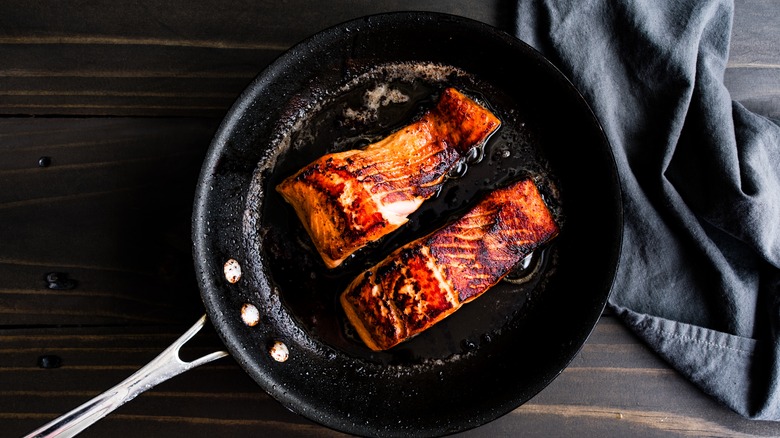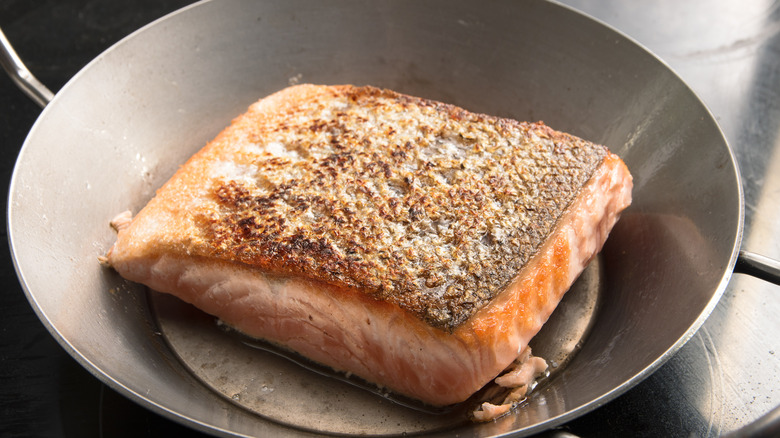Get Extra Crispy Fish Skin By Leaving That Fillet Alone
We may receive a commission on purchases made from links.
If you're aiming to amp up your seafood skills, it's crucial to know how to get crunchy fish skin. The alternative is sad. Nobody likes limp fish skin; they'll toss it aside, wasting a great source of omega-3 fatty acids, mind you.
To achieve the crispiness of your dreams, there's one piece of advice to keep at the forefront of your mind: Leave that fillet alone. As your oil crackles, you might be tempted to shove the fillet around with your spatula, but that would be a big mistake. Because fish is so fragile, overhandling can damage it, or make the meat tough and dry.
Pour a couple of tablespoons of high smoke point oil, like peanut oil or avocado oil, into your pan. Add your fish over medium-high heat, skin side down. For a foolproof searing method, wait three to four minutes, and watch for browning along the edges of the skin without touching the fish itself, allowing the fillet to crisp up with no distractions. By the time you flip it, your fillet will depart from the pan with ease — no sticking involved.
A dry fish helps
After several minutes of searing, waiting, and no touching, watch as the color of the fish changes. You'll want to wait until the majority of the fillet has turned opaque: Most of the cooking time should happen when the skin side is down to get that charred exterior. Flip your fish just once, to finish off the other side of the fillet. A fully opaque piece of fish will indicate doneness.
If you're feeling nervous about that inevitable moment of fish-flipping, there are additional tricks that will encourage browning along your fish skin. For one thing, pat your fish skin dry before adding it to your hot, oiled skillet. This is a helpful rule of thumb for any protein: If the exterior is watery, it'll simply steam once it hits stovetop heat, making it that much more difficult to achieve a crispy skin on salmon, rockfish, or grouper.
You can take things one step further, adding a light coat of flour onto your fish skin. This will dry the exterior even more thoroughly — leading to an even crispier skin. As your fillet cooks, the starches in the flour will turn pleasantly golden, then brown.

